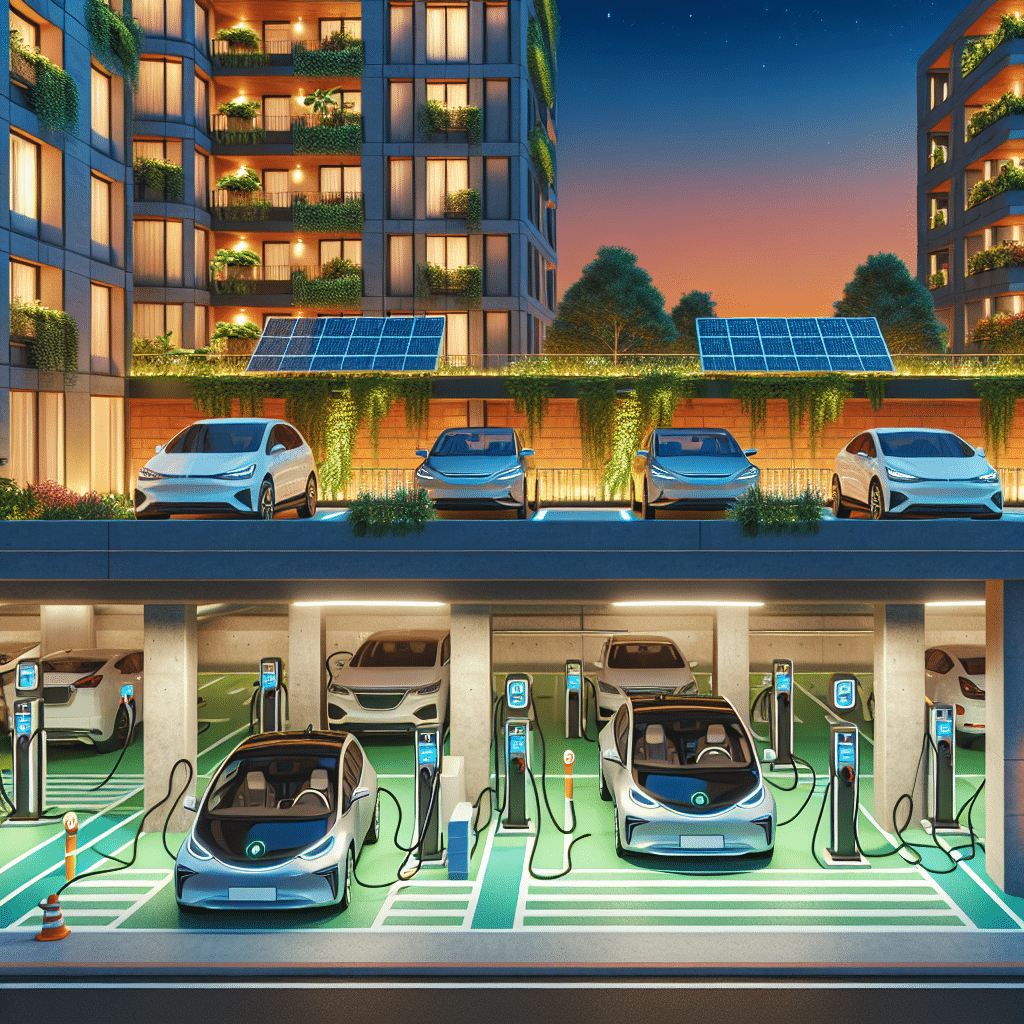Charging Electric Cars in Apartment Complexes: A Comprehensive Guide
Understanding the Need for EV Charging in Apartment Complexes
The increasing popularity of electric vehicles (EVs) is transforming urban mobility. As more consumers make the switch to electric, the demand for accessible charging infrastructure, particularly in apartment complexes, has become critical. With a growing number of residents needing charging solutions, property managers must address this demand to attract and retain tenants.
Key Considerations for Apartment Complex Owners
-
Understanding Resident Needs:
- Survey residents to gauge interest in EV charging stations.
- Investigate the frequency of use and types of EVs owned by tenants.
-
Parking Layout Assessment:
- Evaluate existing parking lots to determine the best locations for charging stations.
- Consider zoning regulations that may affect the placement of EV chargers.
-
Budgeting for Installation:
- Charging stations vary in cost from basic Level 1 chargers to advanced Level 3 fast chargers.
- Factor in installation costs, potential reinforcements needed for electrical systems, and ongoing maintenance expenses.
-
ROI Considerations:
- Consider potential rental increases associated with offering EV charging.
- Analyze how charging facilities can enhance property value and marketability.
Types of EV Charging Stations
-
Level 1 Chargers:
- Use standard 120-volt outlets, ideal for overnight charging.
- Typically, these are installed in designated parking spaces and have low installation costs.
-
Level 2 Chargers:
- Utilize 240-volt outlets, allowing faster charging in approximately 4-8 hours.
- More suitable for apartment complexes due to their balance of speed and installation cost.
-
DC Fast Chargers:
- Provide rapid charging, often sufficient for a quick top-up during short stops.
- While they reduce charging time significantly, they are also the most expensive to install and require specialized electrical infrastructure.
Installation Process Overview
-
Electric System Assessment:
- Consult with qualified electricians to assess the current electrical capacity of your building.
- Ensure the infrastructure can support additional load from EV chargers.
-
Choosing a Charging Network:
- Partner with charging station providers for seamless installation and management.
- Evaluate options for subscription models or pay-per-use systems to generate revenue.
-
Compliance with Regulations:
- Familiarize yourself with local building codes and ADA compliance for accessibility.
- Ensure installations meet safety standards to avoid potential liability issues.
-
Permitting and Inspections:
- Obtain the necessary permits from local authorities ahead of installation.
- Schedule inspections to ensure compliance with local regulations.
Best Practices for Implementation
-
Create Clear Signage:
- Inform residents about the locations and usage guidelines for charging stations through clear signage.
- Use digital platforms, like apps or newsletters, to communicate station availability.
-
Implement Usage Policies:
- Establish rules regarding charging limits, reservation systems, and responsibility for damage.
- Encourage equitable use among residents, possibly through a scheduled monitoring system.
-
Regular Maintenance and Updates:
- Ensure that the charging stations are regularly inspected and maintained to prevent downtimes.
- Keep software up-to-date, if applicable, for improved functionality and user experience.
-
Educate Residents:
- Organize information sessions or provide resources regarding the benefits of EVs and how to use chargers effectively.
- Highlight potential cost savings and environmental benefits associated with EV ownership.
Integrating Technology into Charging Solutions
-
Smart Charging Stations:
- Utilize smart technology to regulate charging loads, optimizing energy consumption during peak hours.
- Platforms that allow users to monitor charging status through mobile applications enhance user experience.
-
Integration with Renewable Energy:
- Install solar panels or wind turbines to complement EV chargers, potentially reducing energy costs.
- Implement battery storage systems to maximize the use of renewable energy.
-
Grid Connectivity:
- Engage with local power providers to explore demand response programs that could be beneficial for the charging stations.
- Tap into incentives for green energy initiatives that can offset costs.
Marketing Your Electric Vehicle Charging Stations
-
Highlighting EV Charging in Listings:
- Make sure to feature EV charging availability prominently in property listings and advertisements.
- Use keywords like “EV charging,” “electric vehicle ready,” or “sustainable parking.”
-
Utilizing Social Media:
- Share updates and news about the installation and benefits of EV charging on social media platforms.
- Post testimonials from satisfied residents who utilize the EV charging stations.
-
Community Engagement:
- Host community events focused on sustainability, electric mobility, and environmental awareness.
- Collaborate with local EV manufacturers or dealerships for promotional events aimed at showcasing benefits.
-
Leverage SEO Strategies:
- Focus on optimizing the content with relevant keywords like “apartment EV charging,” “electric vehicle charging for apartments,” and “charging stations in residential complexes.”
- Regularly update the property website’s blog with informative articles about EVs and their integration into community living.
Challenges and Solutions
-
Limited Space:
- Address space limitations by evaluating underutilized areas of the parking lot.
- Consider multi-unit charging solutions or mobile charging units that can serve multiple residents.
-
Electrical Capacity:
- Upgrade electrical systems or consider phased installations that can be expanded as demand grows.
- Monitor resident usage data to ascertain when and where additional chargers may be necessary.
-
Cost Concerns:
- Explore grants, tax incentives, or utility rebates designed to support the installation of EV charging.
- Communicate any associated costs upfront, ensuring transparency and understanding among residents.
-
Resistance from Residents:
- Provide information concerning the environmental benefits and potential savings associated with EVs.
- Encourage discussions among residents to foster a community spirit surrounding the adoption of sustainable practices.
By prioritizing EV charging infrastructure, apartment complexes can not only meet the modern demands of residents but also contribute positively to environmental goals, enhance community living, and increase property value. The transition to electric mobility is a growing trend that offers substantial benefits for all stakeholders involved.
